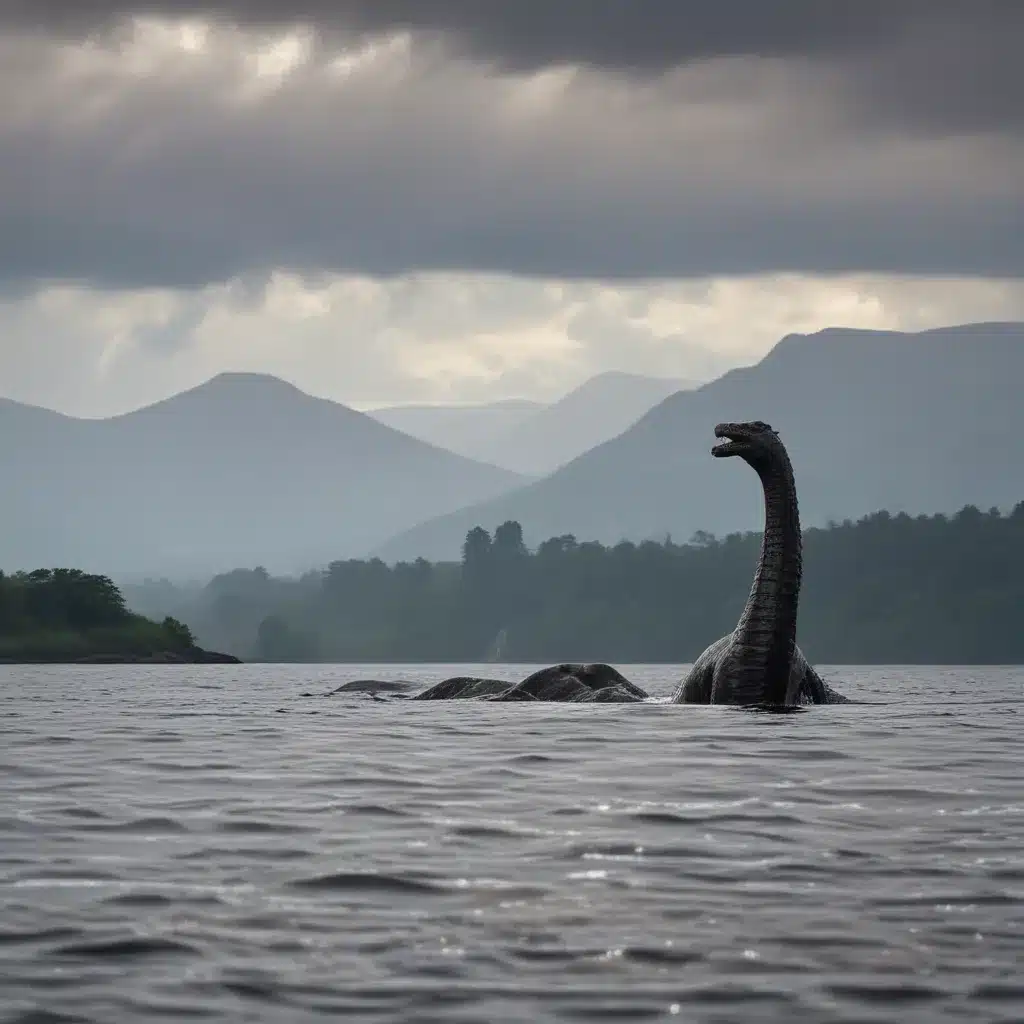
The Elusive Denizen of Loch Ness
On a recent trip to Inverness, I struck up a conversation with some locals in a cozy pub. The topic of discussion? None other than the enigmatic Loch Ness Monster. I was curious to hear their take – was Nessie a real creature, or simply a figment of our collective imagination? Their response was surprisingly vague; they didn’t outright dismiss the possibility, yet they couldn’t point to any personal encounters either.
Intrigued, they directed me to Steve Feltham, the self-proclaimed “Loch Ness Monster expert” who has dedicated over 25 years of his life to solving this enduring mystery. Packing up his life and moving to the shores of Loch Ness in 1991, Steve has spent countless hours scouring the murky depths, searching for even the slightest glimpse of the fabled beast. And while he’s only had one potential sighting during this time, he remains steadfast in his belief that Nessie is out there, waiting to be discovered.
A Storied History
To truly understand the allure of the Loch Ness Monster, we need to travel back in time to the 6th century and the accounts of St. Columba. As one of the earliest documented encounters, the Life of St. Columba by Adomnan describes the saint’s encounter with a river-dwelling monster near Loch Ness. According to the text, St. Columba commanded the creature to retreat, and it promptly obeyed, fleeing back into the depths of the loch.
While believers of Nessie cite this as proof of the monster’s existence, skeptics argue that water-dwelling creatures were a common motif in ancient texts, and the reliability of the narrative is questionable. Nevertheless, the legend of Loch Ness had been sown, setting the stage for future generations to continue the search.
The Surgeon’s Photo and Other Sightings
The next major breakthrough came in the 1930s, when Mr. and Mrs. Spicer reported witnessing a large, awkward creature crossing the road in front of their car along the shores of Loch Ness. Described as approximately 1.2 meters high and 8 meters long, with a wavy neck akin to an elephant’s trunk, this sighting sparked a wave of renewed interest in the monster.
Shortly after, the infamous “Surgeon’s Photo” emerged, allegedly capturing the head and neck of Nessie breaking the surface of the loch. While initially hailed as the first photographic evidence of the creature, the image has since been widely discredited as a hoax. Analysis revealed that the ripples and waves were far too small to have been caused by a large aquatic animal, and a later investigation even uncovered the use of a toy submarine to create the illusion.
Despite these setbacks, the search for Nessie continued, with various sonar readings and video footage providing tantalizing clues. In 1954, the Rival III vessel detected a large object swimming at a depth of 146 meters, keeping pace with the boat for 800 meters before disappearing. And in 1960, Tim Dinsdale managed to film a reddish hump with a distinctive blotch, which some researchers have argued could be the rear body of a substantial creature below the surface.
Loch Ness Shores, our campsite in the heart of the Scottish Highlands, offers the perfect base from which to embark on your own Nessie-hunting adventure. Just a stone’s throw away from the legendary loch, you’ll be well-positioned to explore the rich history and ongoing mystery surrounding this elusive creature.
The Skeptics’ Perspective
Of course, not everyone is convinced by the evidence – or lack thereof – for the Loch Ness Monster. Critics have proposed a wide range of alternative explanations, from misidentified otters and seals to floating logs and water birds. Some have even suggested that sightings could be attributed to elephants from traveling circuses, or the Greenland shark, a rare deep-sea predator.
One of the most persistent theories is that Nessie could be a remnant of the plesiosaur, a long-necked aquatic dinosaur. Proponents of this idea argue that the creature’s distinctive features, such as the elongated neck and paddle-like limbs, are reminiscent of the plesiosaur. However, skeptics quickly point out the issues with this theory, such as the loch’s cold temperature and the creature’s need to surface more frequently to breathe.
The Verdict is Still Out
So, where does that leave us in the ongoing debate over the Loch Ness Monster? The truth is, the verdict is still very much out. As technology continues to advance and tourist numbers to the region increase, sightings of Nessie have become more common, with BBC reporting a record-breaking 8 sightings in 2017 alone.
Whether Nessie is a real, living creature or a figment of our collective imagination, the legend continues to captivate and intrigue people from all over the world. And for those of us lucky enough to visit the stunning Loch Ness Shores, the possibility of catching a glimpse of the elusive monster adds an extra layer of excitement and adventure to our journey.
So, who knows? Perhaps the next time you find yourself strolling along the shores of Loch Ness, you might just be the one to finally unravel the mystery of the Loch Ness Monster, once and for all.

